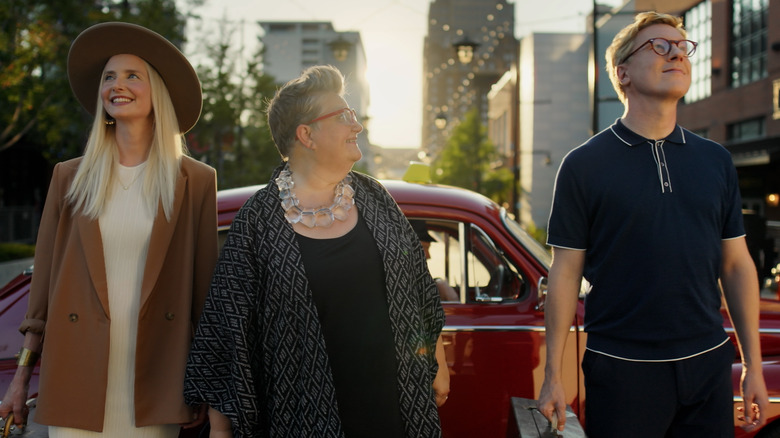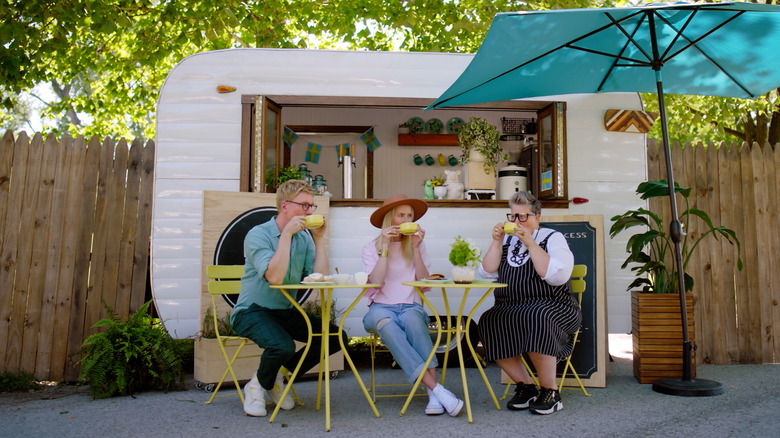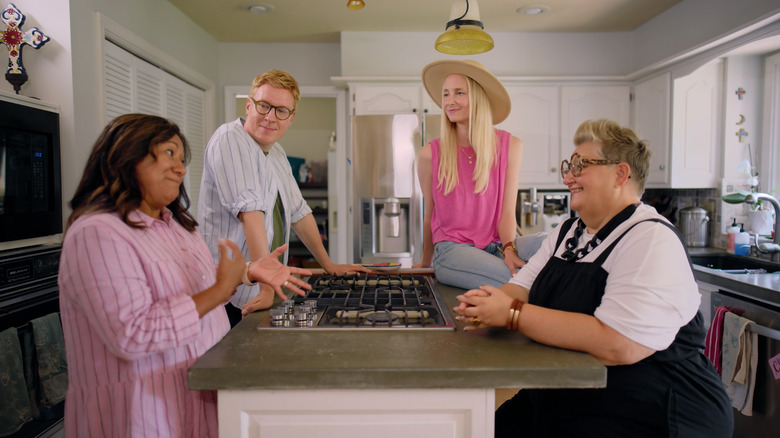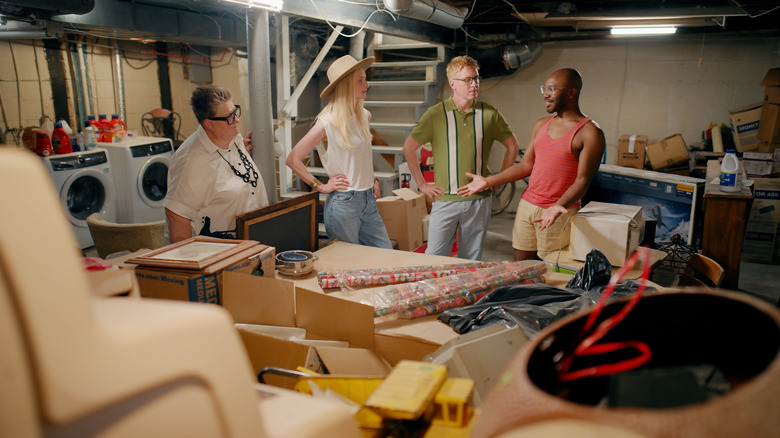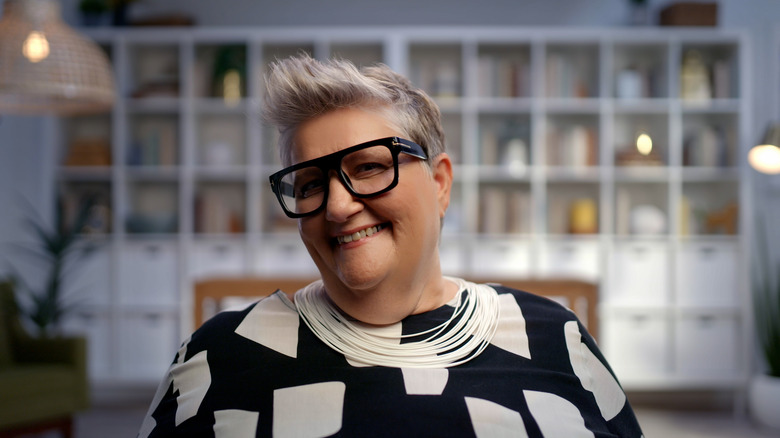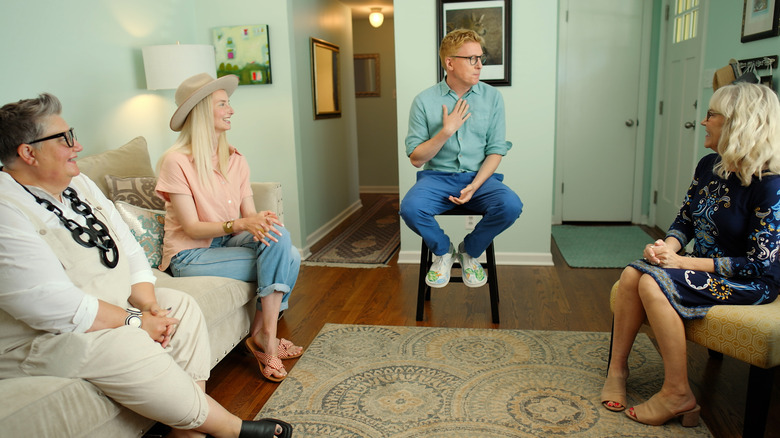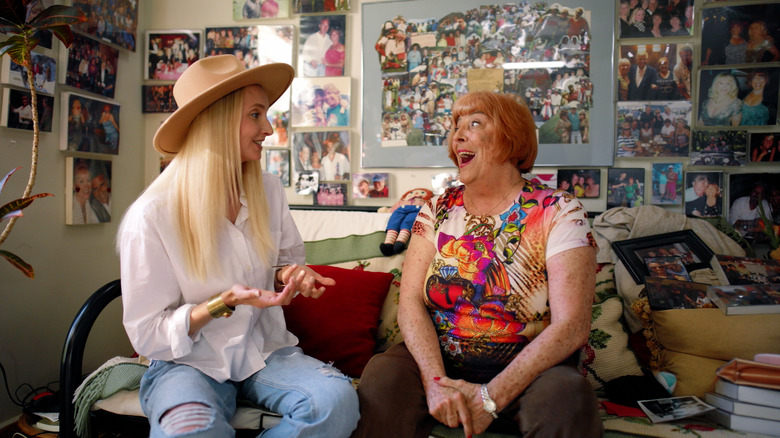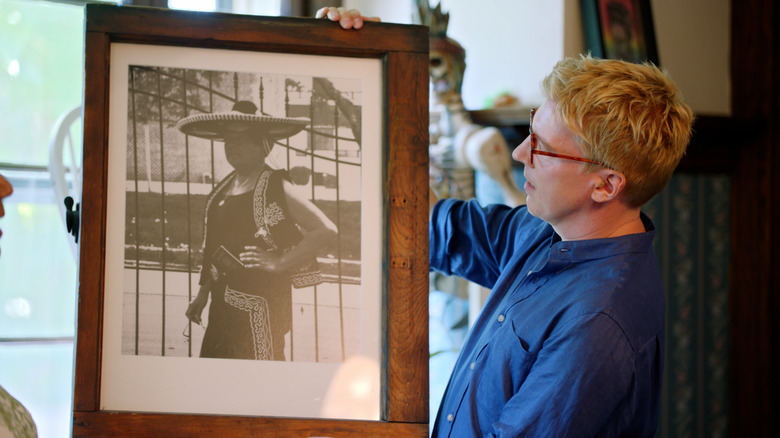The Gentle Art Of Swedish Death Cleaning Experts On The Benefits Of Death Cleaning - Exclusive Interview
Death has always been a part of life, but it's something that most Americans don't want to talk about — until now. A concept called "Swedish death cleaning" is sweeping the nation, and you don't have to be dying to do it. The idea behind Peacock's new series "The Gentle Art of Swedish Death Cleaning" is a fairly simple one, according to a voiceover by actress Amy Poelher: "Cleaning out your crap so others don't have to when you're dead."
A Swedish woman named Margareta Magnusson was the first to detail how anyone can do it in her book called "The Gentle Art of Swedish Death Cleaning." Freeing yourself from the invisible load that unnecessary items carry is the core of the concept, and it's something that is hitting a culture of hoarders hard.
Now, an unscripted series by the same name is here to pull Americans away from their possessions and help them to live a more simplified life. In the series, a team of three Swedish death cleaners — psychologist Katarina Blom, organization coach Ella Engström, and designer Johan Svenson — visit eight American homes in the hopes that they can completely change their lives in more ways than one.
In an exclusive interview with House Digest, the Swedish death cleaners revealed the biggest problem with American homes, detailed the best place to start when it comes to death cleaning a person's house, and shared the ultimate secret that can help us all live a clutter-free life.
The story behind becoming a Swedish death cleaner
What were each of your first impressions of the book "The Gentle Art of Swedish Death Cleaning," and why do you feel like this is such an important concept to share on television?
Katarina Blom: The book is really refreshing. It's so short, it's so brief, anyone can go through it during a night. It gives you a glimpse of the core of death cleaning. Then, in the show, we have so much more space and resources to elevate and highlight the most important parts of this concept. It's so cool to see the impact of death cleaning, as you can do in the show. Of course, that's harder to convey in a book, but the book is such a great first step into death cleaning.
Ella Engström: It's a good thing to like. It's a gift, also, to yourself and to your loved ones, to go through your stuff and see that you have things that matter for you here and now, things that you love, actually. That's one of the things that makes it so important to do it, because you can live more free and be lighter.
Katarina: Yeah, it's liberating.
Johan Svenson: It's about life quality as well. We go through different phases in life, which means that if you don't do this process early on, all these phases will accumulate over time. That's where you get nostalgia items. That's where you get things piled up over time. If you start to live your life more purposely and address your real needs and wants, you will start to edit your life ... maybe live a bit more minimalistic in that sense. Don't just buy things out of lust because, "Oh, that toaster is pink," and you already have a green one, so you need a pink one now. Enough! [Laughs]
Ella: That's a good trick! Someone wants you to buy it.
Johan: Aim for style and not trend. Find your style.
The big problem that sets American homes apart from the rest of the world
From your experiences shooting the series, what would you all say is the biggest difference between American homes and Swedish homes?
Ella: You have a little more stuff than we do. In Sweden, they have a culture of "less is more," so that means that we accumulate less stuff as well. That's the biggest, because you have so many different things and items. For example, seasonal stuff.
Johan: Exactly right.
Ella: We don't have a special cake stand for Halloween in Sweden ... We have the basic things, and we maybe add the napkin with the theme, the seasons, so that's the big difference.
Johan: There's a lot of sets of stuff. If you have Christmas ornaments, you might end up having eight or 12 of them for the same type of purpose.
Ella: A lot of duplicates.
Johan: It's more here, maybe. [Laughs]
Science explains why it isn't easy to purge your possessions
Katarina, from a psychologist's perspective, why is it so hard for people to get rid of their personal belongings?
Katarina: We were built to gather. We are gatherers by evolution, and in this modern age, it has lost its purpose. It's not about survival anymore, but still, we are formed in a way that we can create strong attachment to things. If you add emotions to those things, the attachment becomes even stronger. This is the biggest hurdle for any person.
The people that we've met are all battling with loss in some way. Especially when you lose a person and you inherit their items, it feels like you are getting rid of the person and you're disrespecting them or disregarding them if you donate their things. But I love how we got to help a young man called Godfrey [Riddle]. He lost both of his parents a couple of years back while he was battling cancer. It was so clear, as you can see in the episode, that he wanted to keep everything.
But after a conversation with him, he shifted in this viewpoint that, "Oh, right. My parents are within me, and all things wonderful in life are within me and within the memory of the connection I had to my loved ones. The items are just reminders. They're just stuff." When he did that shift, it became so much easier for him to let go of things.
We could see different versions of this over and over again. The more you process the emotions attached to the items, the item loses its importance, and you realize, "Everything is integrated within me. I don't need the item." It can be nice to have to remind yourself, "But I don't need it."
This is the best approach to organize your home, according to the experts
Ella, as the group's organization coach, what's the toughest space in a home to organize?
Ella: It depends. It's different for different persons, where you have accumulated all your stuff. It depends on when you're coming into different homes, but [in] storage space, like closets and those spaces, there often are a lot of hidden things. There you can find a lot of stuff, but it depends. That could be very different for different persons.
Katarina: Also nostalgic things.
Ella: Yes, absolutely. Because you can see that your things [are] like a timeline. Every item reflects some time in your life. You change during your life, and so does your need. If you have a lot of things like those just-in-case items that you have saved because they could be good to have, then that is normally the biggest problem. [Having] a lot of just-in-case items doesn't work here now anymore. When you get rid of [them], you close a chapter.
What's the best way to approach death cleaning a space? Is it simply to remove all the items and start slowly going through them?
Ella: It's not one approach that fits all. But the best thing is to start small and build up that muscle so you get the momentum, so you feel the light, the unburdening of those things. That's one of the tricks to do. Also, sometimes, when you have a lot of duplicates, it's very good also to do it by taking a category so you see everything displayed together. Then you see, "Ah! This is crazy." Then, choose the one you really love and donate or give away the rest. That's always a fun thing to do: Divide it by categories.
Death cleaning has a direct influence on your design style
Johan, as the group's designer, what would you say is the most practical design style when it comes to Swedish death cleaning?
Johan: That aesthetic is a result of the death cleaning. Americans shouldn't mix it up with minimalism, because that's an aesthetic line or a chosen path of aesthetics. Sometimes, it can become minimalistic, depending on who you are, but it can still be a maximalist doing death cleaning. During the show, you will see that in a lot of houses that we visit, the interior design that I do is very purposeful. It's about the purpose here and now, how you envision your life right now, and how you envision the future. That's also together with the organization that Ella does. The aesthetics of interior design is the result of the process.
It's interesting when you say not to confuse death cleaning with minimalism.
Johan: Death cleaning is not about ridding everything. It's about analyzing it and understanding what has a purpose right now and what's important to me. The house, your home, should reflect you.
Ella: Yes, and in the here and now.
Here's where you should start if you want to Swedish death clean your home
For someone who wants to Swedish death clean their own home, where is the best place for them to start?
Ella: You shouldn't start with the things that you are most attached to, the most emotional stuff. Start out doing something that you feel, "This is easier for me." That's the trick. Also, it's very different for different people. [For] someone, it can be very hard to go through their clothes, where someone else thinks that that's an easy thing. You need to look for yourself: What's the easiest part for me to start? Start little, and then build up that muscle.
Katarina: Both in therapy and also in this process, what motivates people the most is that notion of progress. What Ella's saying is if you start somewhere that feels easy, you notice the progress and then you get that momentum, that wind under your wings that can help you move forward. It doesn't even become heavy — it becomes this process of getting lighter and lighter, and, "I love my home, I love my life," more and more. You can see that in each of the episodes.
Swedish death cleaning is the ultimate secret to keeping your home clutter-free for life
The series also teaches us that you don't have to be at the end of your life to Swedish death clean. What tips do you have for people to be able to keep their homes clutter free and to help keep them from accumulating items over time that they don't need?
Johan: One thing is looking at consumerism in general: We buy a lot of items and stuff because we can. Sometimes, you need to withhold yourself and have a bit of integrity around how you shop and how you buy new things and let your home evolve slowly. You don't need new stuff or immediate gratification just because you can.
Think about it for a few days — you don't need to invest immediately in the items in your house. That's the same thing when someone moves into a new place. A lot of people tick the box that they need these certain things: They need a TV, they need a sofa, they need ... The list is long. Instead, evolve within the space for a while and see how your body feels in your home.
"The Gentle Art of Swedish Death Cleaning" is available to start streaming Thursday, April 27, exclusively on Peacock.
This interview has been edited for clarity.
